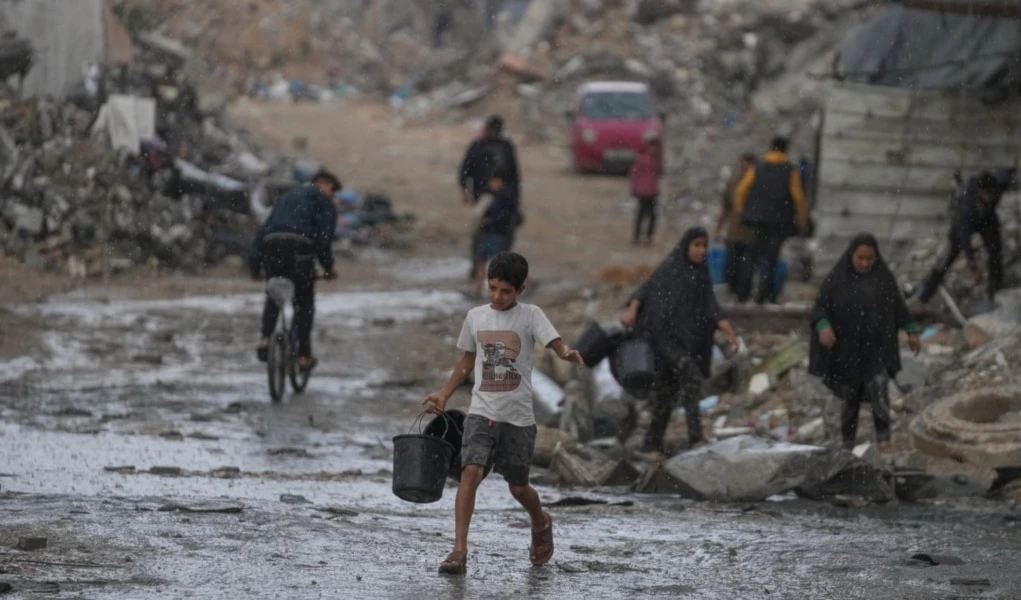Russia submarine ballistic missiles pose striking threat to US: Report
An expert reveals to Newsweek that Russia's Navy capabilities have drastically evolved since the collapse of the Soviet Union following the Cold War.
-

A Borei-class nuclear-powered submarine launches a Bulava ballistic missile in the Barents Sea in August 2019. (TASS)
Russia's missile and submarine capabilities compared to the Cold War Soviet era have exponentially developed, posing a serious and drastic threat to the United States, the Director of Russia Maritime Studies Institute (RMSI) told Newsweek.
Michael Petersen, a professor at the US Naval War College and founding director of RMSI, explained the difference between submarine advancement in current-day Russia and Soviet Russia.
Read more: Russia working to replace Soviet Il-38
The Russian Navy witnessed a massive modernization campaign since the collapse of the Soviet Union in 1991, ranking today as one of the largest submarine fleets worldwide with nearly 58 vessels, 11 of which are nuclear-powered ballistic missile submarines, according to Nuclear Threat Initiative (RTI).
Russia's threat to the US has now shifted from ballistic missiles to cruise missiles, Peterson added.
During the Cold War era, he noted, the Soviet Union used to deploy nuclear-powered ballistic missile submarines off the western and eastern coasts of the US, however, as its submarine and warfare technology developed, the Soviets were able to change the location of their undersea vessels to distant locations while posing the same threat.
Read more: Russia conducts nuclear, ballistic missile exercises
Soviet Union vs Russia
"Moving forward into today, what is the same? And what is different? I'll start with the differences," he started.
"So the difference today is that Russia today, as far as I'm aware, it does not deploy ballistic missile submarines off the coast of the United States. That's a shift, and that is a reflection of the improving technology."
By the end of the Cold War, the majority of ballistic missile submarines were being deployed in the Barents Sea and the Arctic region.
"So that hasn't changed. Because the technology has allowed Russia to maintain strategic ballistic missile force that has enough range and enough accuracy to strike from these bastions."
Read more: US Masses Its Destroyers to Confront Russian Submarines in Atlantic Ocean
According to the navy expert, Russia's navy today has long-endurance nuclear-powered submarines that are able to launch different types of missiles, including ones holding nuclear warheads, with great accuracy.
"So we've gone from a ballistic missile threat to a cruise missile threat. That's not to say that the ballistic missile threat is non-existent, it's still there. It's just in a different location," he said.
In recent years, Moscow has been manufacturing a number of submarines that are capable of targeting sensitive sites both in the US and the European continent.
Read more: Russian, Chinese drills, naval exercises response to US expansion
In 2017, Russian President Vladimir Putin signed off a Naval Doctrine that sets forward a series of measures to develop the navy's capabilities, in addition to shifting its strategic and operational role and future goals.
By 2030, Russia "must possess powerful balanced fleets in all strategic areas," the document said then.
The new fleets, according to the doctrine, must include ships that can operate in the near and far seas, in addition to naval forces equipped with powerful striking weapons with high accuracy.
The document, dubbed by Russia as "The Fundamentals of the State Policy of the Russian Federation in the Field of Naval Operations for the Period Until 2030," states that the Naval forces must provide deterrence in addition to the ability to effectively retaliate against foreign attacks.
In June 2022, the United States Navy launched the building of its largest and most advanced Columbia-class nuclear-powered ballistic missile submarine (SSBN), as part of its aspirations to modernize its sea fleets.
Read more: US, UK to compete over sale of nuclear submarines to Australia
The US has around 64 submarines, including attack submarines, in addition to guided missile and ballistic missile submarines.
In December 2022, Russian President Vladimir Putin announced that four more nuclear-powered submarines will be built as part of the country's current weapons program, ensuring the country's security for many years to come.
The new submarines and ships would be outfitted with high-precision weapons and robotic systems, as well as advanced navigation, communication, and sonar equipment.
Russian ballistic missile submarines, which are currently being developed and built, have many distinguishing features, while new submarines and surface vessels have modern navigation, communications, and sonar systems, as well as high-precision weapons and robotic systems, Putin detailed.
"We will increase the pace and volume of construction of ships of various projects, equip them with the most modern weapons, and conduct operational and combat training of sailors, taking into account the experience gained, including during a special military operation."
"In short, we will do everything necessary to reliably ensure the security of Russia and to protect our national interests in the oceans," Putin added.
Read more: Pentagon reveals nuclear submarine roaming in Middle Eastern waters

 5 Min Read
5 Min Read









